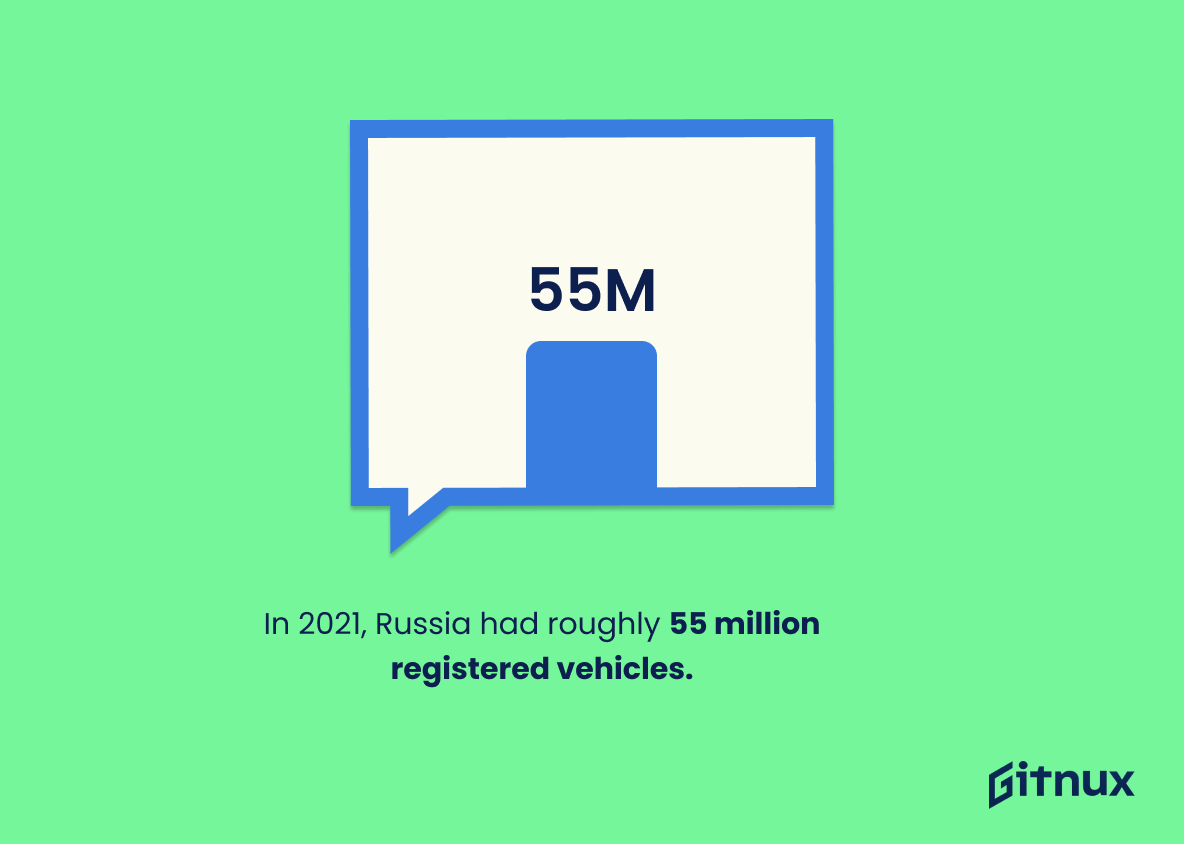Vehicle ownership is an important indicator of economic development and mobility. It can provide insight into the level of access to transportation, as well as a country’s wealth and purchasing power. This blog post will explore vehicle ownership statistics from around the world, including information on registered vehicles in different countries, car ownership rates per capita, average age of cars in operation, electric vehicle sales market share and more. We’ll look at data from sources such as Statista, WorldDataInfo and GreenCarCongress to get a better understanding of global trends in vehicle ownership over time.
Vehicle Ownership Statistics Overview
Global vehicle ownership reached 1 billion units in 2010.
This statistic is a milestone in the history of vehicle ownership, demonstrating the immense growth of the automotive industry over the past decade. It is a testament to the increasing accessibility of vehicles, and the impact they have had on our lives. This statistic is a powerful reminder of the importance of vehicle ownership in our society, and its implications for the future.
In 2018, China had around 239 million registered vehicles.
This statistic is a telling indication of the sheer magnitude of vehicle ownership in China. It serves as a powerful reminder of the immense impact that vehicles have had on the country’s economy and society. It also highlights the importance of understanding the dynamics of vehicle ownership in order to better manage the environmental and safety implications of such a large number of vehicles.
As of 2021, over 51% of new vehicle sales in Norway were for electric vehicles.
This statistic is a testament to Norway’s commitment to sustainability and environmental protection. It shows that the country is taking steps to reduce its carbon footprint and promote the use of electric vehicles. This is an important step in the right direction, as electric vehicles are more efficient and produce fewer emissions than traditional gasoline-powered vehicles. This statistic is a clear indication that Norway is leading the way in the transition to a greener future.
Around 93% of households in the United States owned at least one vehicle in 2021.
This statistic is a powerful indicator of the prevalence of vehicle ownership in the United States. It speaks to the fact that the vast majority of households in the country have access to a vehicle, which can be a major factor in their ability to access goods, services, and opportunities. This statistic is an important piece of information for anyone looking to understand the current state of vehicle ownership in the United States.
The total number of passenger cars in India crossed the 30-million mark in 2019.
This statistic is a testament to the sheer magnitude of the automotive industry in India. It highlights the fact that India is now home to an impressive 30 million passenger cars, a number that is only expected to grow in the coming years. This statistic is a clear indication of the country’s growing economic power and its ability to provide its citizens with the means to own a car. It is also a sign of the increasing importance of the automotive industry in India, and its potential to contribute to the country’s economic growth.
In the European Union, there were 313 cars per 1,000 people as of 2018.
This statistic is a telling indication of the prevalence of car ownership in the European Union. It speaks to the fact that cars are a major part of life in the EU, and that the majority of people in the region have access to a vehicle. This statistic is important to consider when discussing vehicle ownership statistics, as it provides a snapshot of the current state of car ownership in the EU.
In 2021, Russia had roughly 55 million registered vehicles.
This statistic is a telling indication of the prevalence of vehicle ownership in Russia. It speaks to the fact that a large portion of the population has access to a form of transportation, which can have a significant impact on the economy and the quality of life of citizens. Additionally, it can provide insight into the country’s infrastructure and the availability of resources for vehicle maintenance and repair.
In 2021, the global automotive market grew to almost 77.7 million units.
This statistic is a testament to the immense popularity of automotive vehicles, with the global market reaching an impressive 77.7 million units in 2021. It is a clear indication that vehicle ownership is on the rise, and that the automotive industry is thriving. This is an important statistic to consider when discussing vehicle ownership statistics, as it provides insight into the current state of the industry and the demand for vehicles.
In 2019, 40% of all cars on the roads in Germany were diesel.
This statistic is significant in the context of Vehicle Ownership Statistics because it provides insight into the fuel preferences of German drivers. It also indicates the potential environmental impact of the vehicles on the roads in Germany, as diesel engines are known to produce more emissions than other types of engines. This statistic can be used to inform policy decisions and to help guide the development of more efficient and environmentally friendly vehicles.
In Brazil, the total vehicle ownership reached 44 million by the end of 2020.
The fact that Brazil’s total vehicle ownership has reached 44 million by the end of 2020 is a testament to the country’s growing economy and its citizens’ increasing purchasing power. This statistic is indicative of the country’s progress and development, and serves as a reminder of the importance of vehicle ownership in modern society.
37.9% of Canadian households had access to two vehicles in 2016.
This statistic is a telling indication of the prevalence of vehicle ownership in Canada. It demonstrates that a significant portion of households have access to two vehicles, which speaks to the importance of personal transportation in the country. This statistic is especially pertinent to a blog post about Vehicle Ownership Statistics, as it provides a snapshot of the current state of vehicle ownership in Canada.
In 2019, 59% of French households owned at least one passenger car.
The fact that 59% of French households own at least one passenger car is a telling statistic that speaks to the importance of vehicle ownership in France. It is a clear indication that cars are a major part of the French lifestyle, and that they are an integral part of the country’s transportation infrastructure. This statistic is an important piece of information for anyone looking to gain a better understanding of the vehicle ownership landscape in France.
The total number of vehicles in Japan reached 77 million in 2020.
This statistic is a telling indication of the sheer magnitude of vehicle ownership in Japan. It serves as a powerful reminder of the importance of vehicles in the lives of the Japanese people, and the impact that vehicle ownership has on the country’s economy. It also provides a valuable insight into the trends in vehicle ownership in Japan, and how they have changed over the years.
In South Africa, the car ownership rate was approximately 144 vehicles per 1,000 people in 2016.
The statistic of 144 vehicles per 1,000 people in South Africa in 2016 is a telling indication of the country’s vehicle ownership rate. It provides insight into the number of vehicles owned by the population, and can be used to compare the rate of vehicle ownership in South Africa to other countries. This statistic is important for understanding the economic and social implications of vehicle ownership in South Africa, and can be used to inform policy decisions and research.
Conclusion
The data presented in this blog post shows that vehicle ownership is a global phenomenon, with different countries having varying levels of car ownership. In 2020, the United States had 286.9 million registered vehicles and China 239 million; while San Marino has the highest rate of vehicle ownership per capita at 1,263 cars per 1,000 people. Global vehicle ownership reached one billion units in 2010 and continues to grow steadily each year.
In addition to these figures for overall car numbers worldwide, there are also interesting regional trends emerging: Norway leads the way when it comes to electric vehicles sales (51% market share), while Germany still relies heavily on diesel-powered cars (40%). India’s motorized four-wheeler penetration remains low compared to other nations (44%), but its total number of passenger cars crossed 30 million in 2019 – an impressive feat given its population size.
Overall then we can see that although some countries have higher rates of car ownership than others due largely to economic factors such as income level or access to public transport infrastructure – all around the world more and more people are choosing personal mobility over shared transportation options like buses or trains.
References
0. – https://www.elbil.no
1. – https://www.greencarcongress.com
2. – https://www.kba.de
3. – https://www.2.statcan.gc.ca
4. – https://www.worlddata.info
5. – https://www.statista.com
6. – https://www.insee.fr
7. – https://www.acea.auto
8. – https://www.timesofindia.indiatimes.com















